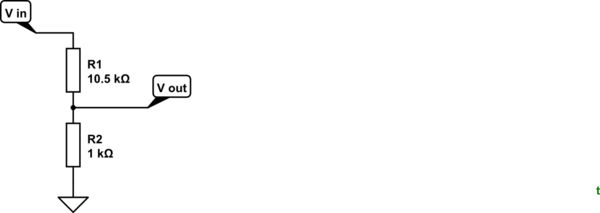I am part of a project that is implementing a power storage system. The storage device voltage must be monitored in order to direct power. The storage device voltage should remain between 12 and 36 V. The project uses a TI TMS320F28027 MCU which operates at 3.3 V. How can the 12 to 36 V be mapped onto 0 to 3.3 V for the MCU.
I posted a similar question here but it specified that the voltage would range from 0 to 60 V. The difference for this question is how to bias the voltage appropriately.
I also posted another question about biasing the output of a current sensor for an ADC, but it involved biasing a balanced voltage around 0 V. I am having trouble adapting the answer to this problem. Diagram from answer:

Figure 1. Diagram from previous answer
An attempt to emulate the design methodology would be:
24 V maps to 1.65 V
38 V maps to 3.3 V
10 V maps to 0 V
The most basic circuit model:
How to design the bias?




